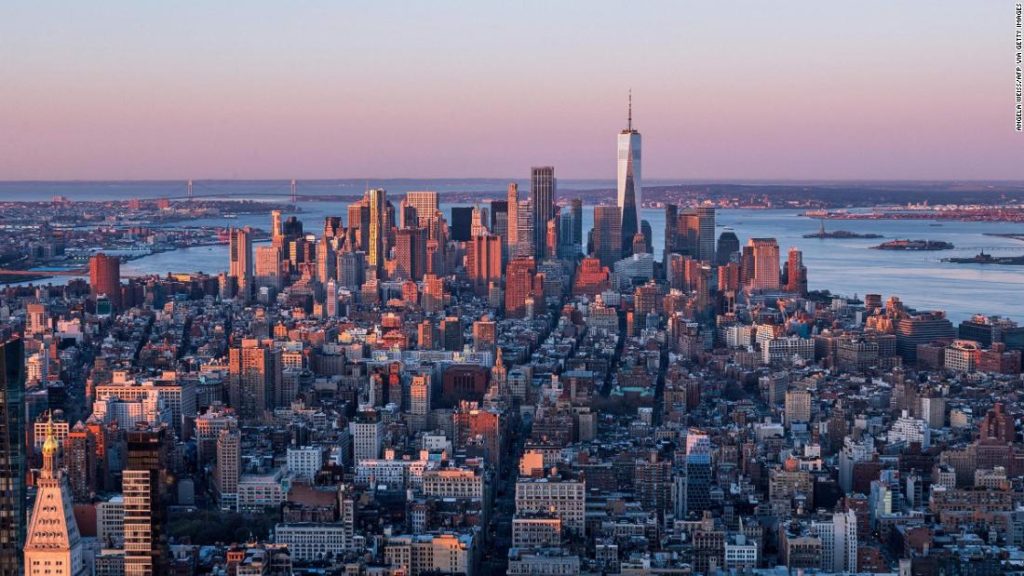When New York’s Equitable Life Building opened in 1870, the businessman behind the project, Henry Baldwin Hyde, was berated for having delusions of grandeur. Costing more than $4 million (around $81 million in today’s money), his insurance company’s headquarters soared a then-astonishing seven stories above the streets of Manhattan.
One hundred forty years later, when the 163-floor Burj Khalifa topped out half a mile into Dubai’s sky, it too was seen by some as extravagant. Both buildings serve as a reminder that it is not only economics and technology that have driven the history of skyscrapers, but symbolism and ego, too.
The race skywards began in America, although whether the Equitable Life Building was the world’s first skyscraper remains a matter of contention among historians. (Today, the term usually refers to structures over 150 meters, or 492 feet, tall but there was no formal definition in the 19th century.)

A drawing of the Equitable Life Building in New York, which opened in 1870. Credit: The New York Historical Society/Getty Images
In the late 1800s, industrialization had driven urban populations and land prices up, making tall buildings increasingly cost-effective, according to Carol Willis, director of the Skyscraper Museum in New York.
“The very first tall buildings … were newspaper buildings and (headquarters for) communications companies like the New York Tribune or the Western Union Building — office buildings that concentrated a work force, piled one on top of the other in order to make business very efficient,” she says.
Highrise construction exploded across the US after the turn of the 20th century. In New York, the record for the world’s tallest building broken six times between 1908 and 1931 — more than doubling in height from the 612-foot Singer Building to the 1,250-foot Empire State Building.
The untold story of Dubai’s first skyscraper
“Until there was a machine that could take you from the first floor to somewhere above the sixth floor, there was really the limit of where people were able to (get to) using their legs,” Willis says, adding: “The two technologies of vertical transportation and verticality of structure came together to open up the possibilities of racing into the skies.”
Though similar in shape, today’s skyscrapers look little like those built in the first half of the 20th century. This is mostly thanks to architecture’s next major technological shift: the curtain wall.
Postwar developments in manufacturing meant that huge panes of glass could be produced quickly and uniformly, and glazed windows soon became the facade of choice for highrises. As well as allowing for greater floor space and more natural light, glass exteriors helped buildings withstand greater wind loads — as did the development of technology like tuned mass dampers, huge swinging counterweights that can mitigate the risk posed by earthquakes and typhoons.
Building for new realities
Vessel-shaped ‘supertall’ skyscraper transforms Beijing’s skyline
According to the Council on Tall Buildings and Urban Habitat (CTBUH), there are now 191 completed “supertall” skyscrapers — a term it uses to describe buildings measuring that are at least 300 meters (984 feet) tall. But that doesn’t mean that our cities will grow taller indefinitely.
While each additional story adds sellable floor space, construction costs also rise. All buildings reach a point where adding an extra floor will cost more money than it generates.
This is partly due to the lower construction costs in Asian and other non-Western countries. However, it may also demonstrate that skyscrapers are about more than a return on investment — they are matter of branding. However, in some cities, building tall can be a necessity.
A prime example, he adds, is Hong Kong — one of the world’s most expensive property markets: “In Hong Kong, where the land is very scarce, going high is almost the only solution.”
This glass could turn skyscrapers into power generators
Whether it’s employing more energy-efficient materials, encouraging natural ventilation or using buildings themselves to generate solar or wind energy, reducing carbon emissions is the new frontier for many skyscraper architects.
“There are many new developments in skyscraper design and technology that are moving towards a goal of making of making skyscrapers something which saves energy, which embraces nature, and which concentrates people in a way that makes urban density more energy-efficient,” Willis says.
“They become very complicated negotiations between the way we think we want to live in the future, and the possibilities of how we can”
Watch the video at the top of this page to see how skyscrapers have evolved through history.
You may also like
-
Afghanistan: Civilian casualties hit record high amid US withdrawal, UN says
-
How Taiwan is trying to defend against a cyber ‘World War III’
-
Pandemic travel news this week: Quarantine escapes and airplane disguises
-
Why would anyone trust Brexit Britain again?
-
Black fungus: A second crisis is killing survivors of India’s worst Covid wave

